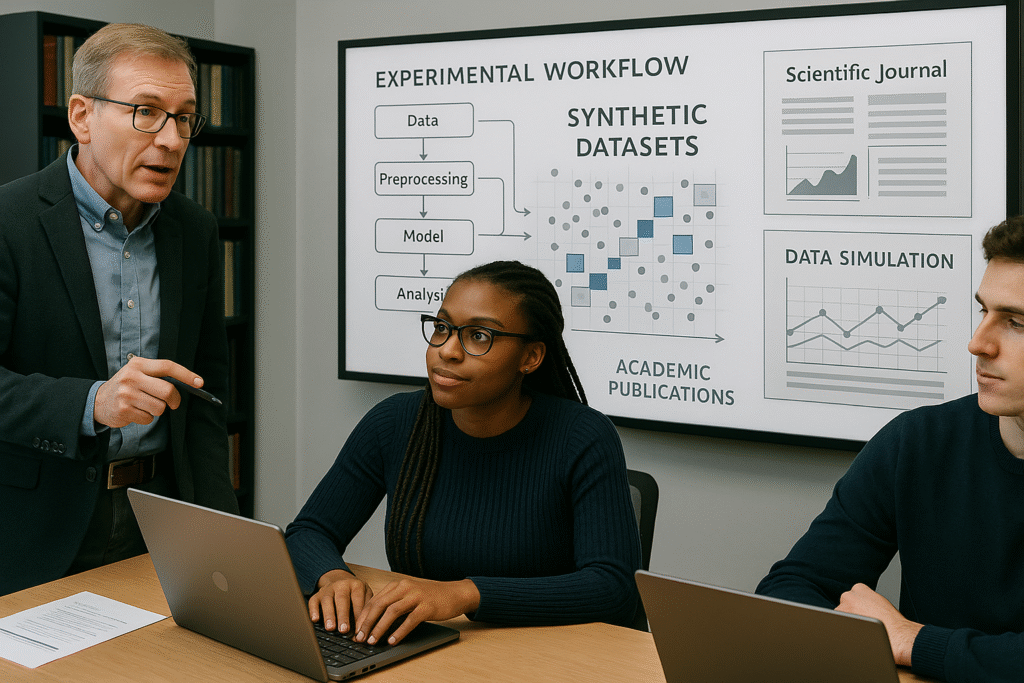The new era of AI-driven research is here, and synthetic data—generated by large language models (LLMs)—is transforming how professors and researchers conduct experiments, teach, and publish reproducible science.
Why Should Professors and Researchers Care?
Collecting, annotating, and sharing large-scale datasets can be slow, expensive, or restricted by privacy regulations. Synthetic data enables academic teams to create, customize, and share realistic datasets, supporting rigorous methodology, open science, and innovation—without the barriers of sensitive or proprietary data.

Key Benefit for Professors & Researchers
Accelerate experimentation and teaching by generating reproducible, shareable datasets—enabling new forms of collaboration and discovery.
What’s New in the Latest Research?
A recent arXiv paper demonstrates that synthetic data, generated by LLMs (like GPT-4 or open-source models), can match or exceed real-world data in research settings. Recent studies highlight:
- Reproducibility: Experiments and benchmarks with synthetic datasets can be easily replicated and shared among labs (Wang et al., 2023).
- Bias control: Synthetic data allows precise management of confounding variables and systematic biases (Nguyen et al., 2022).
- Open innovation: Researchers can create datasets for novel, underexplored, or rare phenomena—fueling new scientific questions (Zhang et al., 2023).
How Professors & Researchers Can Use Synthetic Data
- Reproducible experiments: Build and release synthetic datasets for benchmarking, student assignments, and method comparisons.
- Ethics and privacy compliance: Conduct studies involving sensitive topics or populations, without exposing real individuals’ data.
- Advanced teaching: Simulate complex scenarios for AI, statistics, or data science courses—even when real data is unavailable or confidential.
Let’s Collaborate!
How are you using synthetic data in your research or teaching? Share your projects, experiences, or questions in the comments—or connect with us on LinkedIn for resources, collaboration opportunities, and the latest scientific insights.
